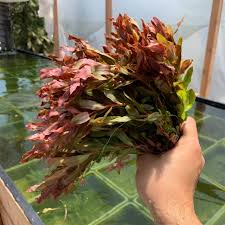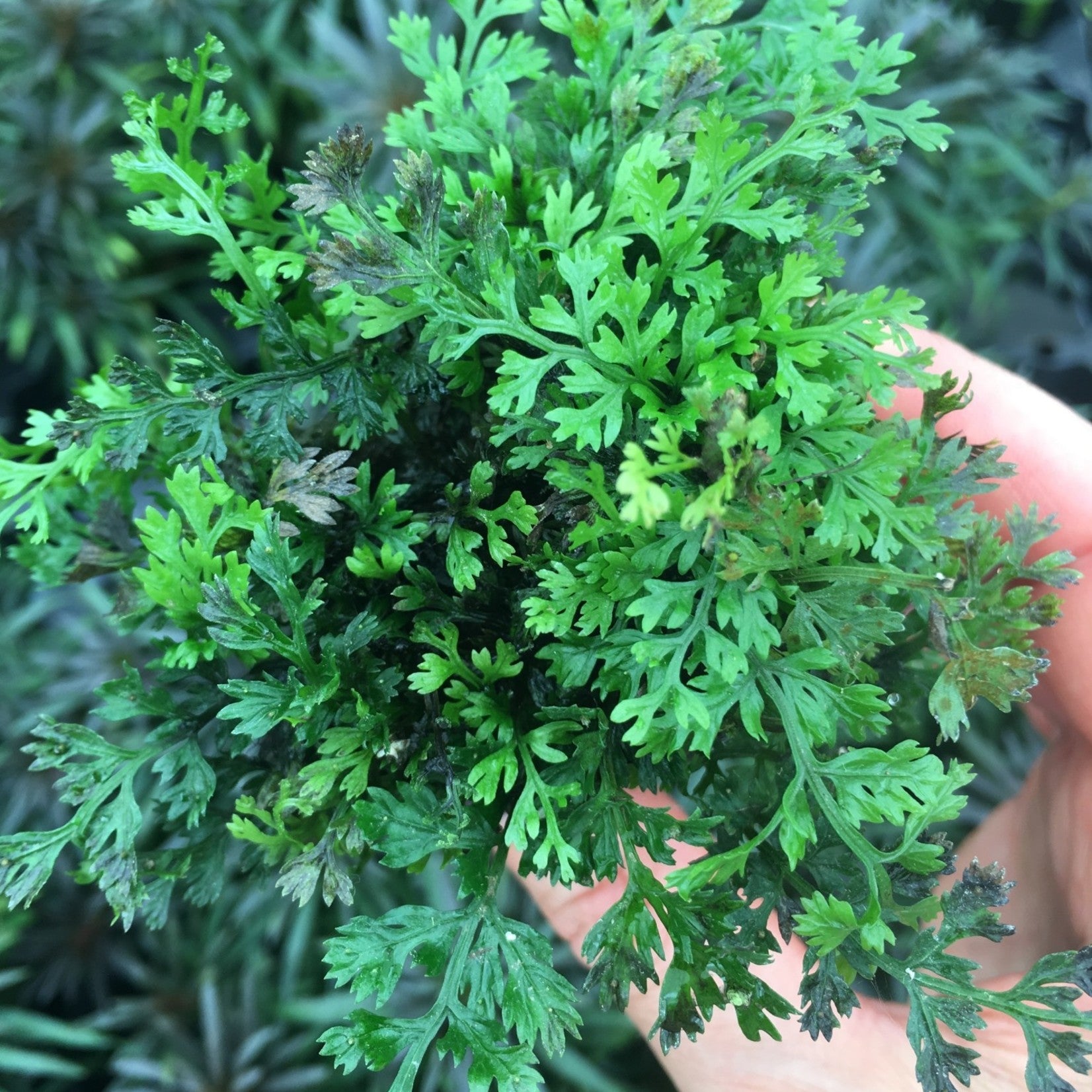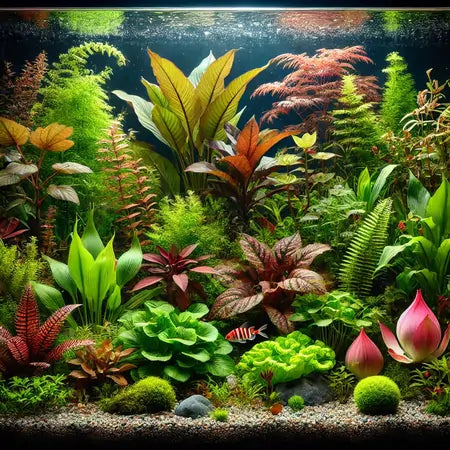Trending searches
$0

Aquarium moss is a beautiful and functional addition to any tank. Its lush greenery not only enhances the aesthetic appeal but also provides numerous benefits for the tank’s ecosystem. If you’re new to aquarium moss or just looking to improve your care routine, this guide will walk you through everything you need to know.
There are various types of aquarium moss available, such as Java Moss, Christmas Moss, and Flame Moss. Each type has its own unique characteristics and care requirements. Consider the look you want to achieve and the specific needs of your tank when selecting the right moss.
Java Moss, for instance, is one of the most popular and beginner-friendly options. It’s highly versatile and can thrive in low-light conditions, making it an excellent choice for those new to aquarium moss. Java Moss is also known for its ability to attach itself to various surfaces, providing a natural and lush look to your tank. If you’re interested in adding Java Moss to your aquarium. You can find high-quality Java Moss for your aquarium in our store.
On the other hand, Christmas Moss offers a unique, bushier appearance that resembles tiny Christmas trees. This type of moss is slightly more demanding in terms of lighting and water conditions but can create a stunning visual impact in your tank. Flame Moss is another fascinating variety with vertical growth patterns that simulate flames, adding a dynamic element to your underwater landscape.
To learn about more types of moss and other aquatic plants, check out this comprehensive guide on aquarium care from Canton Aquatics.
Aquarium moss thrives in certain water conditions. Generally, they prefer slightly acidic to neutral pH levels and temperatures between 72-78°F. Consistently monitor and maintain these parameters to ensure the health of your moss.
Regular water testing is crucial to keep these conditions stable. Utilize reliable water testing kits to check pH, ammonia, nitrite, and nitrate levels. Stability is key; sudden fluctuations in these parameters can stress the moss and hinder its growth. For an in-depth guide on setting up and maintaining optimal water conditions, refer to this resource.
Adding a buffer like driftwood can help maintain slightly acidic conditions naturally, benefiting both your moss and other plant life in the aquarium. Make sure to acclimate new moss slowly to your tank’s conditions to reduce shock. Nottingham, in particular, responds well to gradual changes and consistent environments.
Additionally, remember to keep nitrates in check. While moss can tolerate low levels of nitrates, high levels can lead to poor health and algae growth. Incorporating floating plants like Fairy Moss can naturally absorb excess nutrients, helping to maintain cleaner water.
Lighting is a crucial factor for the growth of aquarium moss. Most mosses do well in low to moderate light. Ensure your aquarium is equipped with a suitable light source that mimics natural daylight, but be cautious of too much light as it can promote algae growth.
Consider using LED lights, which offer a spectrum close to natural daylight while being energy-efficient. Adjust the duration of lighting to about 8-10 hours a day to avoid excessive algae growth. You can also use a timer for consistent lighting schedules. For a deeper dive into lighting needs and options, check out this guide.
When positioning your moss, be mindful of the light source. Some mosses like Java moss prefer shaded areas and can flourish even under low light. On the contrary, mosses like Flame Moss might need moderate lighting to achieve their maximum growth potential. Experiment by adjusting the placement and lighting to see what works best.
Combining artificial and ambient light can also be beneficial. For example, placing your aquarium near a window with indirect sunlight can supplement the artificial light source while adding a natural touch to your setup. Just ensure the tank is not in direct sunlight as it may cause temperature fluctuations.
Properly planting and anchoring your moss can help it establish and grow more effectively. You can attach moss to rocks, driftwood, or other décor using fishing line or cotton thread. Over time, the moss will naturally adhere to these surfaces.
Start by selecting the anchor material that best fits your tank’s aesthetics and practical needs. Driftwood is often preferred for its natural look and ease of use. Clean the material thoroughly before attaching the moss to avoid introducing contaminants into the aquarium.
When attaching the moss, take small clumps and evenly spread them over the chosen surface. Secure the moss with fishing line or cotton thread, making sure not to bind it too tightly. This allows for water flow and ensures the moss can spread. With time, the fishing line will dissolve, leaving the moss firmly attached.
If you prefer a more natural look sooner, consider using super glue gel specifically designed for aquarium use. Place small dabs on the anchor surface and then press the moss gently until it adheres. This can be especially useful for vertical surfaces or intricate designs. Always check the product labels to ensure they are safe for aquatic environments.
In addition to aesthetic anchoring, placement is key. Position the moss in areas with good water circulation but away from direct filter outflows. This balance helps in distributing nutrients while preventing detachment from strong currents. Regularly check that the moss remains securely anchored, especially after cleaning or rearranging the tank.
Routine maintenance is essential for the health of your aquarium moss. Regularly trim overgrown sections to keep the moss looking tidy and prevent it from overshadowing other plants. Remove any debris or decaying parts to maintain a clean environment.
Use sharp, clean scissors for trimming to avoid damaging the plant. Focus on removing any brown or decayed sections first, as these can quickly deteriorate water quality. After trimming, use a net to scoop out any floating debris to keep the water clear and aesthetically pleasing.
Periodic water changes are a cornerstone of moss maintenance. Aim for weekly changes of 10-20% of the tank water. This helps to remove accumulated waste and introduces fresh nutrients, benefiting both moss and fish. Combining water changes with filter maintenance ensures a balanced ecosystem that promotes healthy moss growth.
Algae can be a common issue in tanks with moss. To control algae, avoid excessive lighting and manage nutrient levels by not overfeeding your fish. Incorporating algae-eating species such as shrimp or snails can also help keep algae in check, making your moss maintenance routine more manageable.
Regular inspection of your tank’s parameters can go a long way in preventing issues. Use water testing kits every couple of weeks to monitor pH, nitrate, and ammonia levels. Prompt action can mitigate potential problems before they impact the moss or other tank inhabitants, ensuring a thriving aquatic environment.
Aquarium moss can sometimes face issues like algae growth or detachment from surfaces. Implement preventive measures such as controlling light exposure and water flow. If detachment occurs, re-anchor the moss to its substrate and ensure it has adequate time to establish.
If your moss starts showing signs of poor health, such as browning or thinning, it might be an indicator of unsuitable water conditions. Review the parameters and adjust as necessary. Temporary measures, like installing a CO2 diffuser, can also boost moss health if growth appears stunted.
Another common problem is the accumulation of debris within the moss, which can hinder its health. Regularly use a gentle siphon or a debris catcher to remove any buildup within the moss. This keeps it clean and promotes better growth. For more insights, this article provides tips on managing aquarium debris.
In the case of pest invasions, such as snails or unwanted plant species, a brief dip in a diluted bleach solution can help. Mix 1 part bleach with 19 parts water and immerse the moss for no longer than 2 minutes. Rinse thoroughly and allow it to sit in dechlorinated water for a few hours before placing it back in the tank.
Finally, stay vigilant about any changes in your tank. By maintaining a close watch and proactively addressing minor issues, you can ensure that your aquarium moss remains a thriving feature in your aquatic environment. A periodic review of this in-depth guide can help keep your knowledge up-to-date and your tank in tip-top shape.
Caring for aquarium moss might seem daunting at first, but with the right approach, it can be a rewarding and enjoyable experience. By choosing the appropriate species, ensuring the right water conditions, and following proper lighting and maintenance practices, you can create a thriving underwater garden. With consistent care, your aquarium moss will flourish, creating a beautiful and healthy environment for your aquatic friends.



Check out our shop for a variety of fresh, farm-grown plants! Find the perfect options to enhance your aquarium today.
!